Jasmine Plant
- November 3, 2023
- 0 comment
The Jasmine plant, scientifically known as Jasminum, is a popular and enchanting flowering shrub renowned for its fragrant blossoms and lush, glossy leaves. With over 200 different species, this versatile plant is native to tropical and subtropical regions worldwide, and it has been cherished for centuries for its aromatic qualities and ornamental beauty.

Jasmine flowers, typically white or pale yellow, emit a sweet, intoxicating fragrance that’s often associated with romance and relaxation. They are commonly used in perfumes, teas, and essential oils, and their scent can fill gardens and indoor spaces, making them a favorite choice for both experienced gardeners and novices.

Jasmine plants thrive in well-drained, sunny locations and are relatively low-maintenance, making them a delightful addition to gardens, balconies, or as potted houseplants, bringing a touch of elegance and a soothing scent to any environment.
| Characteristics | Description |
| Scientific Name | Jasminum |
| Common Names | Jasmine |
| Plant Type | Flowering shrub |
| Family | Oleaceae |
| Origin | Native to tropical and subtropical regions |
| Average Height | Varies by species, typically 3 to 10 feet (0.9 to 3 meters) |
| Foliage | Evergreen, glossy dark green leaves |
| Flowers | Fragrant, typically white or pale yellow |
| Fragrance | Sweet, floral scent |
| Bloom Time | Spring to early summer |
| Light Requirements | Full sun to partial shade |
| Soil Type | Well-drained, fertile soil |
| Watering | Regular, keep soil consistently moist but not waterlogged |
| Pruning | Prune after flowering to maintain shape and encourage new growth |
| Hardiness Zones | Varies by species, typically USDA zones 7-11 |
| Uses | Ornamental, perfumes, teas, essential oils |
| Maintenance | Relatively low maintenance |
| Common Varieties | Jasminum officinale, Jasminum sambac (Arabian Jasmine), Jasminum polyanthum (Pink Jasmine) |
Botanical Beauty of “Jasmine Plant”
The Jasmine plant, known scientifically as Jasminum, stands as a botanical testament to nature’s beauty and fragrance. With over 200 species, this flowering shrub has captivated the hearts and senses of people around the world for centuries. Its glossy, evergreen leaves and delicate, sweet-scented blossoms make it a true botanical gem. In this article, we’ll explore the many facets of the Jasmine plant, from its woodland elegance to its ecological importance, as well as its cultivation, conservation, and the myriad uses and benefits it offers.
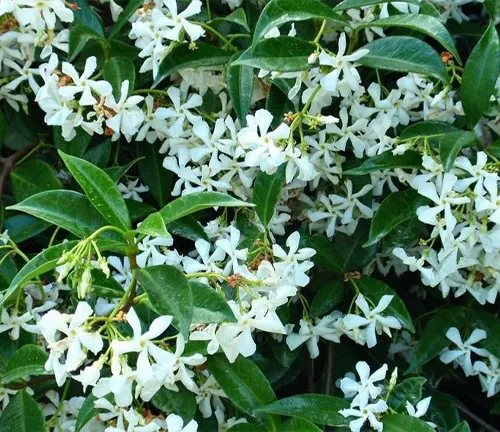
Woodland Elegance
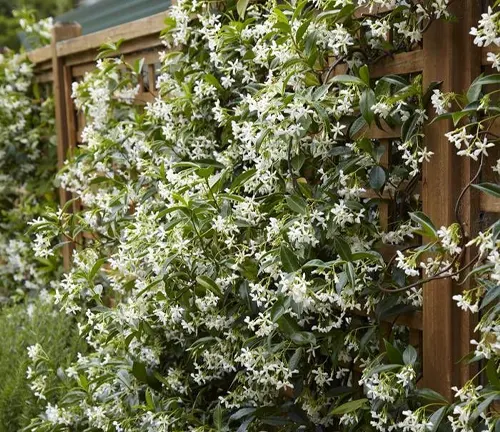
Jasmine plants are known for their enchanting presence, which graces gardens, forests, and landscapes with a touch of elegance. Their lustrous dark green leaves and fragrant flowers add charm to any setting. Some species, like Jasminum officinale, with its twining vines, create a magical canopy, weaving their way through trellises and arbors. The woodland elegance of Jasmine adds a serene and enchanting aura to any outdoor space.
Ecological Importance
Beyond its visual and olfactory appeal, Jasmine plays a vital role in the environment. Its nectar-rich flowers attract pollinators, such as bees and butterflies, aiding in pollination and supporting local ecosystems. Additionally, Jasmine serves as a host plant for various butterfly species, providing sustenance for their caterpillars. These ecological connections highlight the significance of Jasmine in preserving biodiversity and ecological balance.
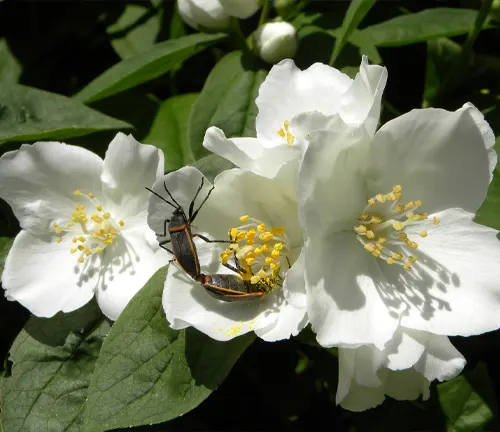
Cultivation and Conservation
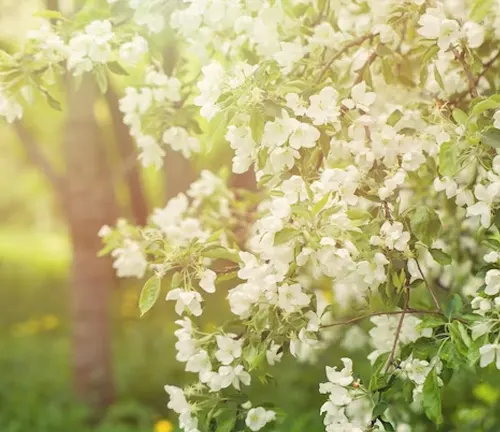
Cultivating Jasmine plants is a rewarding endeavor for garden enthusiasts. They thrive in well-drained soil, under full sun to partial shade, and require regular but not excessive watering. Various species are suited to different USDA hardiness zones. While their popularity endures, some Jasmine species are endangered in their native habitats due to habitat loss and overharvesting for the fragrance industry. Conservation efforts are essential to protect these botanical treasures for future generations.
Fragrance
The defining feature of the Jasmine plant is undoubtedly its captivating fragrance. The sweet, floral scent emitted by its white or pale yellow blossoms has been cherished for millennia. Jasmine flowers have made their way into perfumes, essential oils, and teas, offering a touch of natural luxury. The intoxicating aroma has been associated with relaxation, sensuality, and romance, making it a symbol of beauty and serenity.
Soil Stabilization
Jasmine plants contribute to soil stabilization and erosion control. Their extensive root systems help prevent soil erosion, making them a valuable asset in landscapes with sloping terrain. In regions prone to landslides, Jasmine’s root networks provide essential support to stabilize the soil, showcasing the plant’s multifaceted ecological importance.
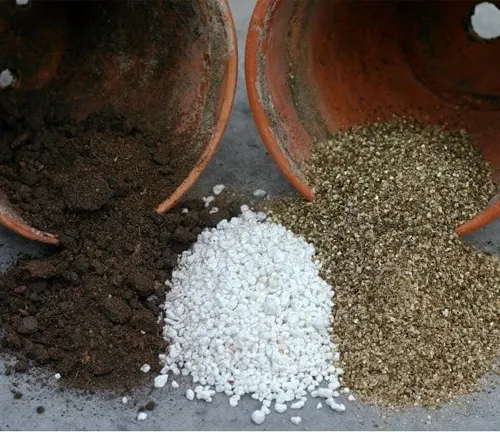
Common Uses
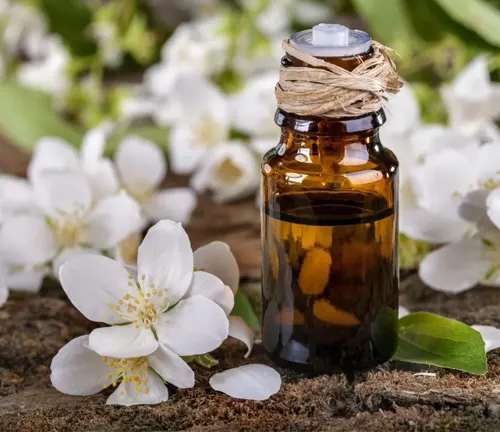
Apart from their ornamental value, Jasmine plants find their way into various aspects of human life. The flowers are used to make teas like jasmine green tea and are essential in the perfume industry. Their calming scent has made them a popular choice for aromatherapy and relaxation. In some cultures, Jasmine flowers are used to symbolize purity, love, and good luck, making them an essential element in weddings and festivals.
Benefits
The Jasmine plant offers an array of benefits to humans and the environment. Its soothing fragrance can reduce stress and anxiety, and its nectar supports pollinators, contributing to biodiversity. Furthermore, its aesthetic appeal and the array of products derived from it make Jasmine a symbol of elegance, beauty, and wellness.
Different Species
Common Jasmine
(Jasminum officinale)
This is one of the most popular and well-known species. It features fragrant white flowers and twining vines, making it a favorite for gardens and landscapes.
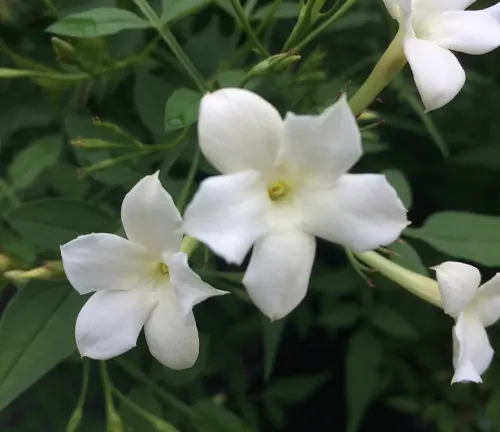
Arabian Jasmine
(Jasminum sambac)
Known for its intensely fragrant, white, or pale yellow flowers, Arabian Jasmine is a common choice for both ornamental purposes and the production of jasmine tea and essential oils.
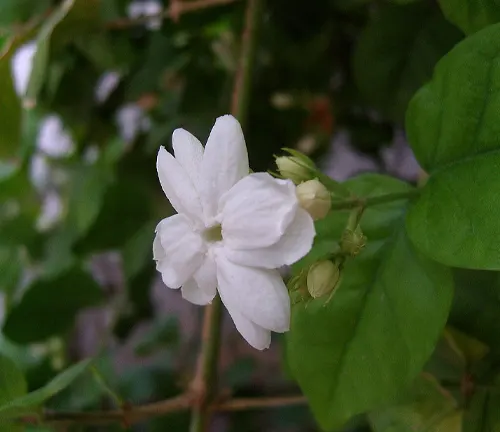
Pink Jasmine
(Jasminum polyanthum)
As the name suggests, this species produces delicate pink flowers. It’s often grown as an indoor or outdoor ornamental plant and is admired for its prolific blooming.

Winter Jasmine
(Jasminum nudiflorum)
This species is unique for its bright yellow flowers and its ability to bloom in the winter months. It’s a deciduous shrub and is treasured for its cold-hardy nature.
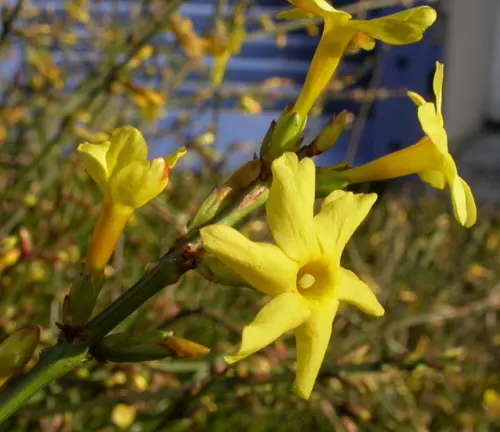
Spanish Jasmine
(Jasminum grandiflorum)
Native to South Asia, this Jasmine species is famous for its large, white, highly fragrant flowers. It’s a popular choice for perfumery and as an ornamental plant.
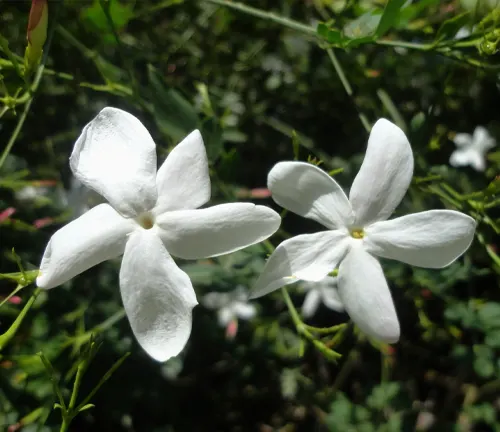
Italian Jasmine
(Jasminum humile)
This species is known for its bright yellow flowers and can be found in various regions, including the Mediterranean. It’s often used as a ground cover or in rock gardens.
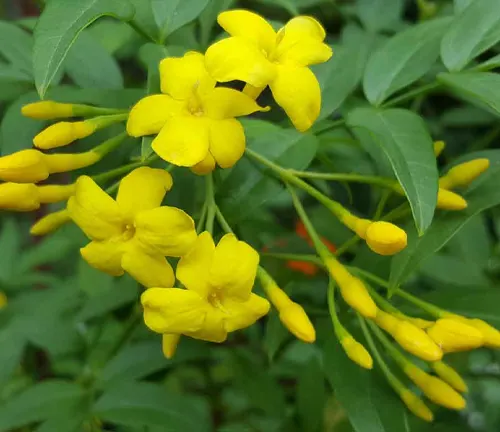
Carolina Jasmine
(Gelsemium sempervirens)
Also known as Yellow Jessamine, this North American species features yellow, trumpet-shaped flowers. It’s a climbing vine that is prized for its appearance and hardiness.
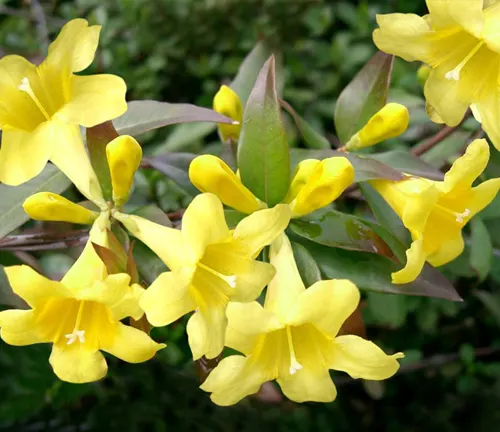
Primrose Jasmine
(Jasminum mesnyi)
With bright yellow flowers, Primrose Jasmine is appreciated for its early spring blossoms and is a charming addition to gardens.
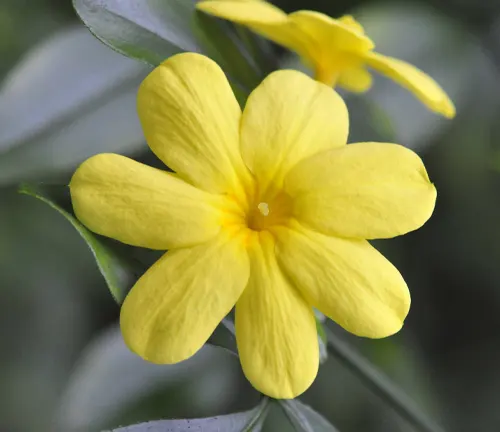
Japanese Jasmine
(Jasminum nudiflorum var. revolutum)
This variety of Winter Jasmine has a more compact growth habit and slightly different flower characteristics.

Confederate Jasmine
(Trachelospermum jasminoides)
While not a true Jasmine, this plant is often referred to as Confederate Jasmine due to its similar appearance and fragrance. It’s a popular choice for ground cover and for covering walls and fences.
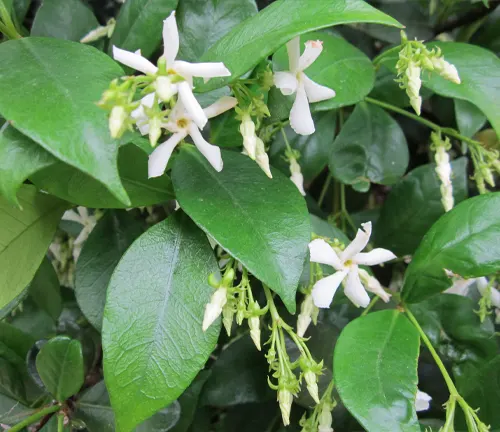
Frequently Asked Questions (FAQs)
1. What is a Jasmine plant?
A Jasmine plant is a fragrant, flowering shrub belonging to the Jasminum genus. It’s known for its sweet-scented, white or pale yellow blossoms and glossy leaves.
2. How do I care for my Jasmine plant?
Jasmine plants require well-drained soil, regular watering, and access to sunlight. Pruning after flowering helps maintain their shape, and they can be grown outdoors or as potted houseplants.
3. Can Jasmine plants be grown indoors?
Yes, many Jasmine species can thrive indoors as long as they receive adequate light and care. Arabian Jasmine is a popular choice for indoor cultivation.
4. When do Jasmine plants bloom?
The blooming time varies by species, but many Jasmine plants bloom in the spring to early summer. Some species, like Winter Jasmine, can bloom in the winter.
5. How do I propagate Jasmine plants?
Jasmine plants can be propagated through stem cuttings or layering. Softwood cuttings are typically taken in the spring or early summer and rooted in well-draining soil.
6. What is the significance of Jasmine flowers in different cultures?
Jasmine flowers hold cultural significance in many parts of the world. They are often associated with purity, love, and good luck. In some cultures, they play a role in weddings, festivals, and religious ceremonies.
7. What are the common uses of Jasmine flowers?
Jasmine flowers are used in perfumery, aromatherapy, and the production of essential oils. They are also used to make jasmine tea, known for its fragrant and soothing qualities.
8. Are Jasmine plants hardy and suitable for my climate?
Jasmine plants have varying hardiness levels depending on the species. It’s important to choose a species that matches your climate and hardiness zone.
9. Do Jasmine plants attract pollinators?
Yes, Jasmine plants attract pollinators such as bees and butterflies with their nectar-rich flowers. They play a role in supporting local ecosystems and biodiversity.
10. Are there any conservation concerns related to Jasmine plants?
Some Jasmine species are endangered due to habitat loss and overharvesting for the fragrance industry. Conservation efforts are important to protect these plants in their native habitats.
11. Can I grow Jasmine from seeds?
While it is possible to grow Jasmine from seeds, it’s not the most common method of propagation. Many gardeners prefer using stem cuttings or layering for better results.



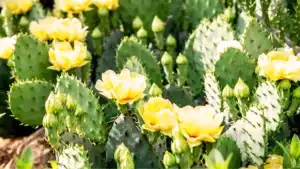
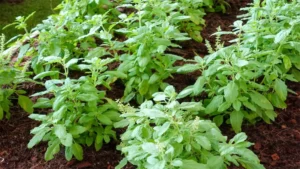

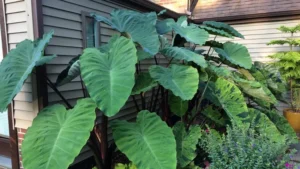

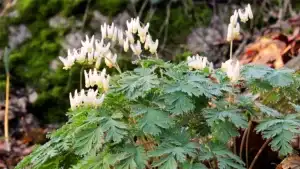
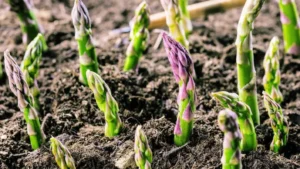




Leave your comment